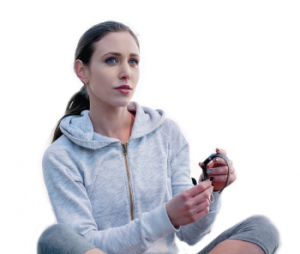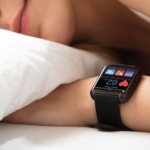
Image Source Trading Ltd / SHUTTERSTOCK.COM
The Case
A 58-year-old patient with knee osteoarthritis has been decreasing her physical activity over the past several years due to painful joints, which has resulted in significant weight gain. At her appointment, you encourage her to engage in more physical activity and eat a well-balanced diet.
A few weeks later, the patient returns to your office looking for recommendations for weight loss. She insists she has been more active and is eating better, but her weight has not changed. A few of her coworkers use physical activity monitors or smartphone apps to help them be more active and lose weight. She is wondering if these would work for her. She is curious about your opinion of these and whether they could work for her, too, especially when she is facing chronic knee pain. She is worried that if she continues on this path of inactivity and continued weight gain, she will likely need a joint replacement in the next few years.
The Dilemma
Should clinicians be recommending the use of these technologies to assist with behavior change, even if the efficacy of using these technologies for modifying diet, physical activity and weight is unknown? Should clinicians be considering personal factors (e.g., socioeconomic status, technology literacy, physical limitations) that may influence the patient’s ability to access or utilize the technology prior to determining whether a recommendation should be made?
The Evidence
The use of technology to facilitate behavior change has become increasingly more popular over the years as the utilization of smartphones, smartphone applications and wearable physical activity monitors continues to rise. According to the Pew Research Center, over 77% of adults own a smartphone, including 42% of those older than 65.1 It is estimated that one in six adults uses a wearable device (i.e., smartwatch or fitness band) as well.2
Smartphone and wearable users have the opportunity to download numerous apps to pair with these devices in efforts to track fitness and diet or nutrition. Of an estimated 165,000 mobile health apps currently on the market, 57,750 (35%) of these are fitness based and another 19,800 (12%) are diet and nutrition based.3
Although these health-related apps and wearables are nearly ubiquitous in today’s society, recommending the use of these devices to facilitate diet and activity change may not be as straightforward as it may seem. First, most of the commercially available smartphone apps are not guided by theory and may not incorporate the evidence-based behavior change techniques necessary to modify and sustain newly adopted behaviors.4,5
More research on the effectiveness of health-related apps and wearables is emerging, although many limitations exist. These technologies are often incorporated and tested within a larger multicomponent behavioral intervention, which makes it difficult to interpret the individual effects of the technology. Even when looking at the effectiveness of the multicomponent behavioral interventions as a whole, the results do not always favor the use of technology to modify behaviors.6-8 Likewise, the results are inconsistent regarding the use of an app or wearable alone in the absence of other components of a behavioral intervention.
Within primary care, recommendations to use a smartphone app were insufficient to produce weight change.9 Conversely, the use of an armband physical activity monitor and website demonstrated potential to initiate significant weight loss.10
Discussion
An ethical question is raised regarding whether a clinician should be recommending that patients use these technologies to assist with making behavior changes before the efficacy of the devices has been evaluated. With varying results, a clinician must consider the costs and benefits of making recommendations to use these apps and devices. In the instances where the app or device is effective, the patient sees numerous health benefits (e.g., weight loss, increased self-confidence, increased physical activity). To the contrary, when the app or device is not found to be effective, the potential for harm may exist for the patient.
Additionally, the cost of these devices may be a burden for those of lower socioeconomic status. Not only does this form of treatment require the patient to purchase the device or app, but also to have a smartphone with Internet capability and adequate cellular data for app usage. Therefore, the clinician must take care in assessing the patient’s current resources prior to making a costly recommendation to prevent a further divide between the standard of care available for patients of all demographics.
The effectiveness of technology to increase physical activity, improve diet and produce weight loss remains unknown. Although the recommendation of these tools could be an appropriate first line of treatment, a failed attempt at behavior change could be detrimental to patients’ self-efficacy and could hinder future attempts. Further, even though more older adults are using smartphones and other technologies, the learning curve may be daunting for some patients. With increased burden and technology challenges, engagement with these tools will decline or be nonexistent. The last concern with existing apps and wearable devices is that they are not specifically tailored toward an arthritic population.
As the popularity of smartphone apps and wearable physical activity monitors continues to grow, more clinicians may encounter cases like the one presented above. Clinicians and other healthcare professionals will need to balance the abundancy of these technologies and patients’ beliefs of how effective they will be, with the evidence in the literature of the efficacy of the technology to assist with behavior change, as well as individual patient characteristics that could influence the ability to obtain or use the technology.
What Would You Do?
As the technology continues to rapidly outpace the research, what would you do? Do you encourage your patients to use an intervention that may or may not be beneficial?
Sara M. Rothberger, PhD, is a post-doctoral fellow in the Department of Exercise Science and a member of the Technology Center to Promote Healthy Lifestyles at the University of South Carolina in Columbia.
Linda S. Ehrlich-Jones, RN, PhD, is an assistant director, Center for Rehabilitation Outcomes Research at the Shirley Ryan AbilityLab, Chicago, and research associate professor of physical medicine and rehabilitation in the Feinberg School of Medicine at Northwestern University in Chicago.
Christine A. Pellegrini, PhD, is an assistant professor of exercise science and a member of the Technology Center to Promote Healthy Lifestyles at the University of South Carolina in Columbia. She is a member of the ACR’s Committee on Ethics and Conflict of Interest.
References
- Mobile fact sheet. Pew Research Center Internet and the American Life Project. 2017 Jan 12.
- Tech-styles: Are consumers really interested in wearing tech on their sleeves? The Nielsen Company LLC. 2014 Mar 20.
- Misra S. New report finds more than 165,000 mobile health apps now available, takes close look at characteristics and use. iMedicalApps. 2015 Sep 17.
- Conroy DE, Yang C, Maher JP. Behavior change techniques in top-ranked mobile apps for physical activity. Am J Prev Med. 2014 Jun;46(6):649–652.
- Pagoto S, Schneider K, Jojic M, et al. Evidence-based strategies in weight-loss mobile apps. Am J Prev Med. 2013 Nov;45(5):576–582.
- Jakicic JM, Davis KK, Rogers RJ, et al. Effect of wearable technology combined with a lifestyle intervention on long-term weight loss. JAMA. 2016 Sep 20;316(11):1161–1171.
- Spring B, Pellegrini CA, Pfammatter A, et al. Effects of an abbreviated obesity intervention supported by mobile technology: The ENGAGED randomized clinical trial. Obesity (Silver Spring). 2017 Jul;25(7):1191–1198.
- Burke LE, Conroy MB, Sereika SM et al. The effect of electronic self-monitoring on weight loss and dietary intake: A randomized behavioral weight loss trial. Obesity (Silver Spring). 2011 Feb;19(2):338–344.
- Laing BY, Mangione CM, Tseng C-H, et al. Effectiveness of a smartphone application for weight loss compared with usual care in overweight primary care patients. Ann Intern Med. 2014 Nov 18;161(10 suppl):S5–S12.
- Pellegrini CA, Verba SD, Otto AD, et al. The comparison of a technology-based system and an in-person behavioral weight loss intervention. Obesity (Silver Spring). 2012 Feb;20(2):356–363.
Editor’s note: If you have comments or questions about this case, or if you have a case that you’d like to see in Ethics Forum, email us at [email protected].
